Chapter: Modern Medical Toxicology: Organic Poisons (Toxins): Venomous Bites and Stings
Classification of Snakes
Classification of Snakes
Snakes are classified on the basis of morphological
charac-teristics such as arrangement of scales (lepidosis), dentition, osteology, myology, sensory organs, and the
form of the hemipenes, as well as on the basis of immunological analysis of
venom and serum proteins, and sequence analysis of DNA that encodes
mitochondrial and other enzymes.
There
are about 3500 known species of snakes in the world, of which less than 350
species are venomous. Among non-venomous snakes, only the giant constrictors
belonging to family Boidae are dangerous to man. Examples include rock python (Python sebae ) of Africa, reticulated
python (Pythonreticulatus) of South
East Asia, especially Indonesia, andanaconda (Eunectes murinus) of South America. The Indian rock python is seen
all over India, and grows up to 3 metres, but not a single case of human
fatality has been reported that can be definitely attributed to this snake. The
regal python of Nepal grows up to 10 metres in length, and is said to be the
largest snake in the world. The giant constrictors act by coiling around the
victim and crushing him to death. Venomous snakes belong to 5 families:
1. Colubridae: This family includes almost 1400 species, or75% of all the
snake genera and 78% of all the snake species in the world. Approximately 400
of these species of Colubridae have short immobile fangs, or enlarged solid
teeth at the poste-rior end of the maxilla. About one third of the Colubrid
species possess rear fangs which deliver a toxic saliva delivered by a chewing
motion. Colubrid snakes are the predominant species on all continents except
Australia. Examples include mountain racer, Western and Eastern hognose snakes,
parrot snake, rat snake, wandering garter snake, etc.
2.Atractaspididae: This family comprises African and
MiddleEastern burrowing asps or stilleto snakes (also known as burrowing or
mole vipers or adders, false vipers, side-stabbing snakes), which have very
long front fangs used for immobi-lising their prey by a side-swiping motion.
These fangs often protrude from the corner of the partially closed mouth.
3.Elapidae: These
snakes have relatively short, fixed front(proteroglyph) fangs, which however
may extend up to 10 mm long). They are anchored at the anterior portion of the
maxilla. Examples include the following—
a.Cobras
(Naja)
b.
Kraits (Bungarus)
c.Coral snakes (Calliophis, Maticora, Micrurus)
d.
Mambas (Dendroaspis)
4.Viperidae: These snakes have highly developed
longcurved, hinged, front fangs, which are channelised in the form of a
hypodermic needle. There are two sub families— a. Viperinae or true vipers: Vipers and adders
b.Crotalinae or pit vipers: Rattle
snakes (Crotalus,Sistrurus), and
Asian pit vipers (Trimeresurus, Hypnale).
5.Hydrophidae: This family comprises sea snakes, whichhave short fixed
fangs as in the case of the elapids. Approximately 330 species of snakes exist
in India, of which about 70 species are venomous (40 land snakes and 30 sea
snakes) . The commonest Indian venomous snakes are referred to as the “Big
Four”, and comprise common krait (Bungarus
caeruleus), common cobra (Naja naja),
saw-scaled viper (Echis carinatus),
and Russell’s viper (Vipera russelli).
Other venomous snakes which are less
commonly encountered include the common green pit viper or bamboo snake (Lachesis gramineus), large-spotted viper
(Lachesismonticola), horse-shoe viper
(Trimeresurus strigatus), Gray’sviper
(Trimeresurus purpureomaculatus),
anamalai viper (Trimeresurus anamallensis),
brown or common himalayan viper (Agkistrodon
himalayanus), hump-nosed viper ( Agkistrodonhypnale),
Millard’s viper (Agkistrodon millardi),
large-scaledviper (Lachesis macrolepis),
and mock viper (Psammodynastespulverulentus),
all of which are pit vipers. Of the remaining, thefollowing are important: king
cobra (Ophiophagus hannah), Bibron’s
coral snake (Calliophis bibroni),
Maclelland’s coral snake (Calliophis
macclellandi), slender coral snake (Calliophistrimaculatus
), and common Indian coral snake (Hemibungarus
nigrescens ). The commonest sea snake encountered in Indianseas is the
hook-nosed sea snake (Enhydrina schistosa).
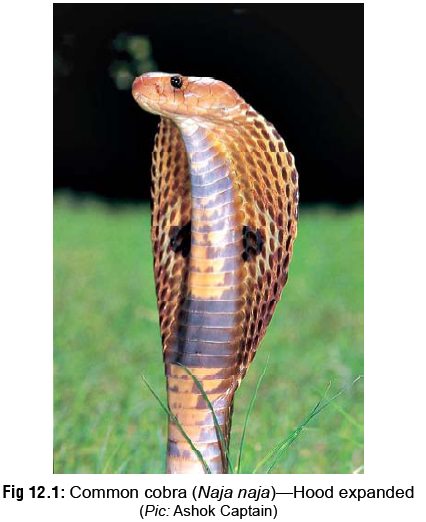
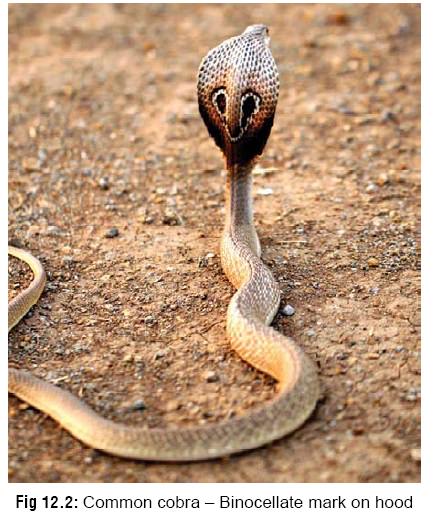
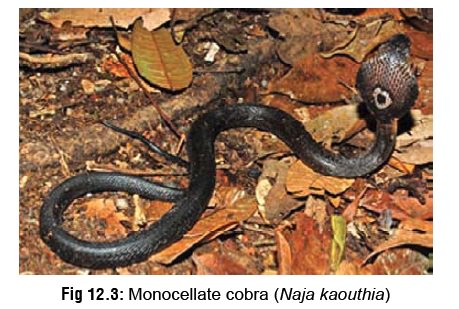
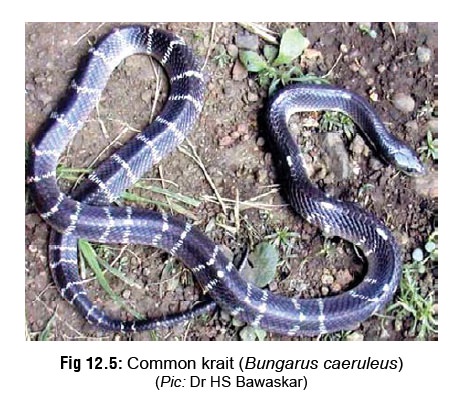
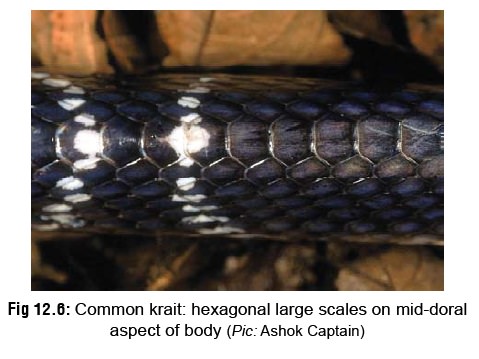
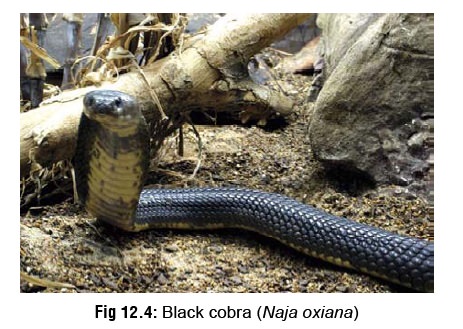
Related Topics